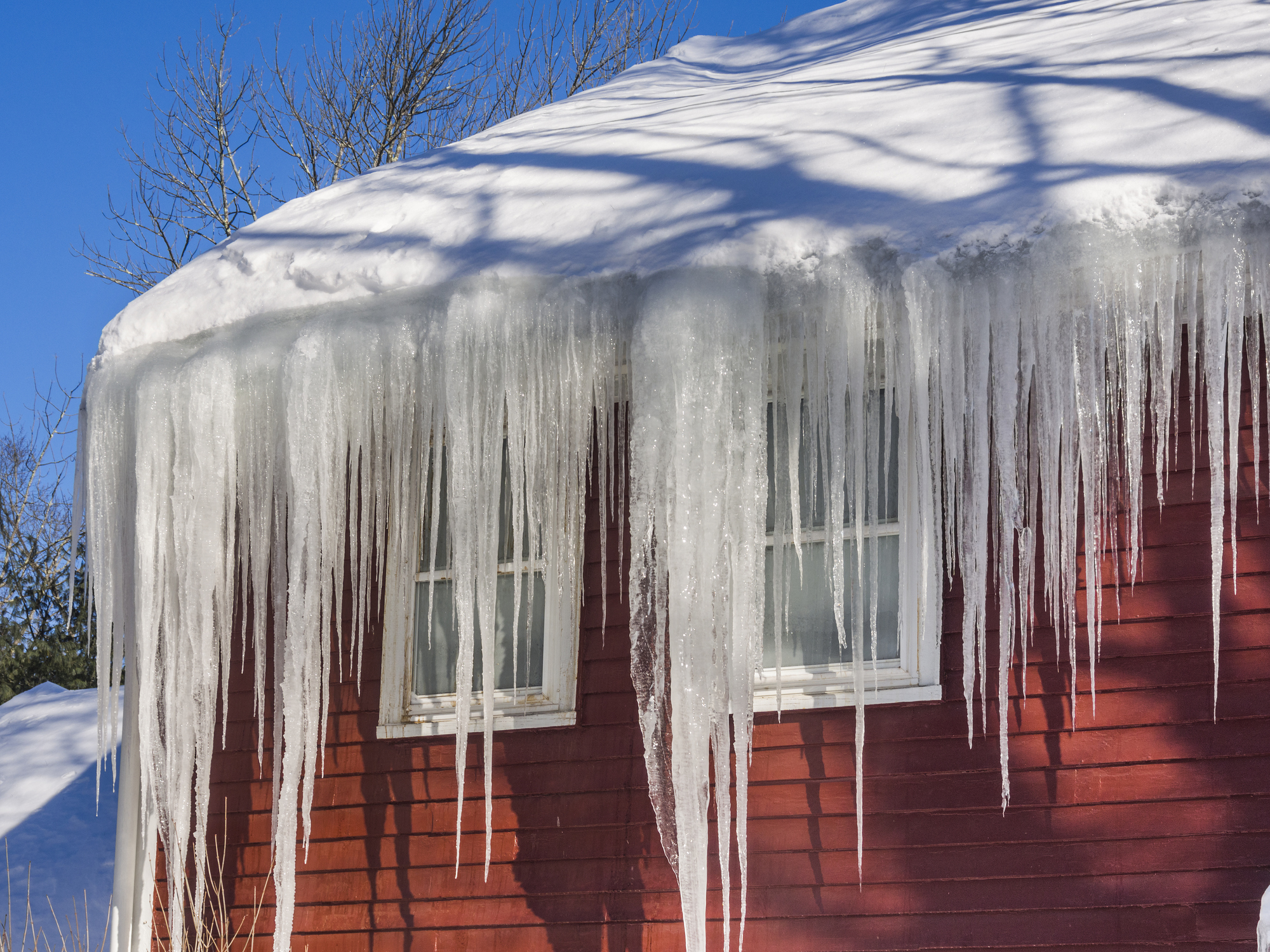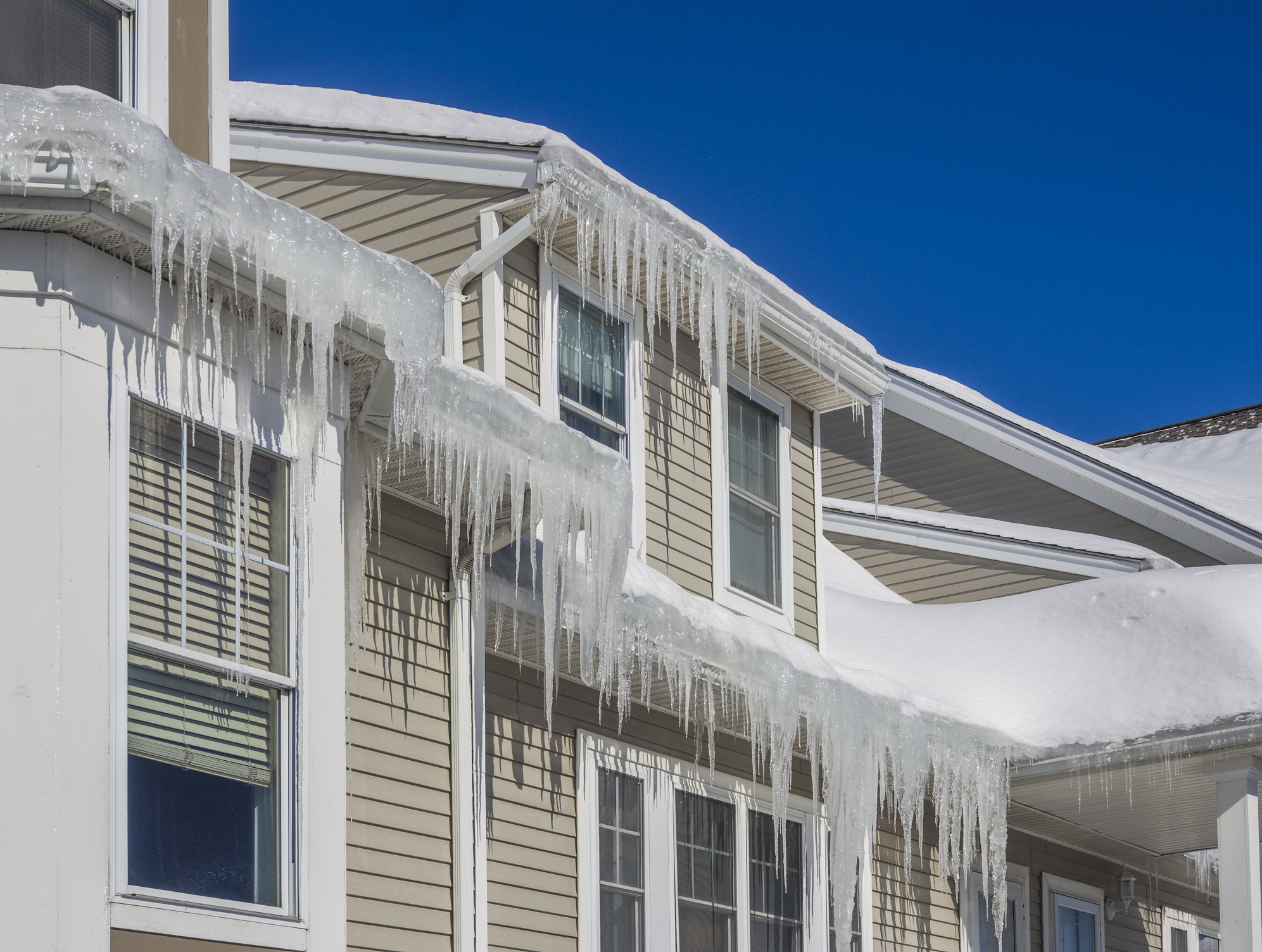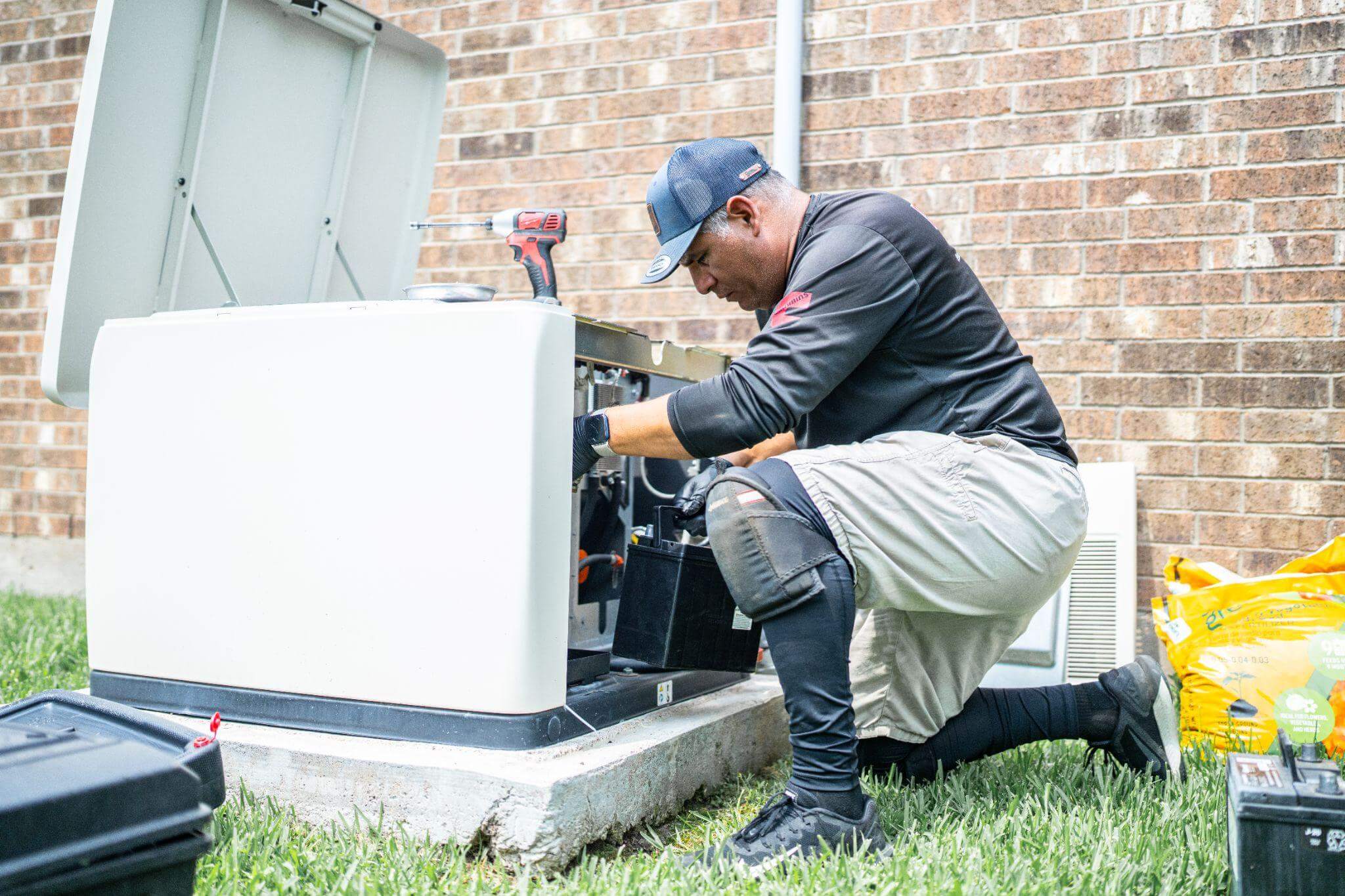Are you doing a roofing project?
Modernize can pair you with three to four pros in your area, so you can compare options and save time and money.
Icicles on your roof may look quaint and charming, but unless your house is made out of gingerbread, they usually wind up doing a lot more harm than good. Typically, they’re a sign that your roof is forming ice dams—big, hard hunks of ice that build up over the edge of your roof. When ice dams form, they can cause a snowball effect (no pun intended), leading to leaks and water infiltration that will wind up costing you a ton on repairs. A rogue leak in your roof can damage your drywall and rot your ceiling joists and wall studs. It can get into your home’s insulation, resulting in mold growth, compromised air quality, and reduced R-values. It can wind up causing water damage, peeling paint, or ruined wall paper. All in all, it’s not something you want for your home.
Additionally, ice dams could be trying to tell you something important about your home. They can be a sign that you have a problem with ventilation or air sealing—and those issues can drive up your heating and cooling costs and your energy use, too. It’s all related, so let’s jump in and give you a good overview of these pesky, icy nuisances—and what you can do to prevent them.

What Causes Ice Dams?
Ice dams aren’t some natural phenomena like snowfall. They happen because of the way heat in your home—and specifically your roof—is being managed. It works like this: snow, sleet, or ice falls on the roof’s surface. At the same time, however, problems with the ventilation, sealing, and insulation in the home’s attic have caused the interiors to heat up—and warmth then escapes through the roof. That melts the snow on the exterior, and the snowmelt starts to travel down to your home’s gutters.
Unfortunately, the edges of the roof aren’t as warm as the top, so when that melting water hits the area just above the gutters, it refreezes. The ice blocks access to the gutters, so the ice ridge gets bigger and bigger. Then, as water on the surface above continues to melt, it gets underneath the ice dam and below your shingles—which is where the leaks come from. It’s a big mess, and the longer it goes unnoticed, the worse it gets.
Find the Right Contractor for Your Roofing Project
Whether you’re ready to begin your project now or need some expert advice, our network of contractors are here to help. With a few simple questions, we’ll find the best local professionals for you
How Unchecked Ice Dams Cause Problems for Homes
We’ve already touched on some of the ways ice dams (and the resulting leaks) can end in disaster. But leaks aren’t the only dart in an ice dam’s arsenal. They can do a real number on the exterior and interior of your home, too. For instance, ice dams can cause all of the following issues:
- They can damage gutters and siding. Your gutters are meant to carry and funnel water away from your roof, not support a huge brick of solid ice! When ice dams form on top of gutters, the weight can be too much for them, causing the gutters to tear loose from your home. And when your home’s drainage system is compromised, your siding will be more vulnerable to leaks and damage, as well.
- They can harm your roof. The thaw-and-freeze process that’s part of the ice dam cycle poses a hazard to your shingles as well. All that water and ice pressing against your shingles can rip, crack, and tear them. And then guess what? You’ll be even more vulnerable to leaks.
- They can cause water to seep into your walls and insulation. Probably the biggest issue with ice dams, though, is that they can cause leaks. That ice backup situation pushes water against your shingles, where even a small pinhole crack can allow it to slowly drip into your walls, ceilings, and attic. While that can wreak all kinds of havoc on your walls, it also affects the insulation inside the walls as well. Wet insulation is poor insulation. Fiberglass insulation, in particular, is composed of recycled glass fibers suspended in tiny pockets of air. When water droplets fill those pockets, it conducts heat, pulling it right out of your interiors and drawing it away into your walls.

How to Get Rid of Ice Dams for Once and for All
The good news is that an ice dam isn’t permanent—it can be easily mitigated, both with long-term prevention and temporary solutions that will get ice off your roof in the meantime. If you’re dealing with an ice dam today, here’s what to do:
- Temporary fixes. The best way to stop ice dams is to have a professional evaluate your home’s attic ventilation, floor sealing, and insulation. However, there are a few temporary fixes you can use to limit the damage. One idea is to lower the temperature in your attic. Set up a box fan and aim it at the spot on your ceiling under the ice dam. To tackle the ice dam from outside, fill an old pair of pantyhose with calcium chloride pellets and drape it across the ice dam so that one edge hangs off the gutters. Whatever you do, don’t climb on your roof with a chisel and try to chip the ice away by yourself. For one thing, the surface will be slippery from the ice and you’re likely to fall. Additionally, you can permanently damage your shingles and open yourself up to more leaks.
- Permanent solutions. Those are only short-term fixes, of course. To permanently stop ice gaps, you need to investigate their source. Often this is because the sealing or insulation in your attic floor isn’t adequate. That means that heated air is escaping from your home’s interiors into your attic—and that’s likely driving up your heating expenses, too. The EPA’s ENERGY STAR program recommends that you insulate attic floors at an R-38, which translates to about 10 to 14 inches of insulation. But if you live in a very cold climate, you may need to go up to an R-49. Another issue could be that your vent system isn’t working properly—or isn’t adequate for your home. A functioning ventilation system should, in theory, vent hot air out of your attic so that ice dams don’t form. A roofer should be able to install additional soffit vents on your roof without doing too much construction. A professional energy auditor or roofer can give you their opinion of your attic ventilation and help you make recommendations, as well.
- Preventative measures. Lastly, you can prevent roof dams before they start by having your gutters and roof inspected each year—especially in the fall before the first freeze. An inspector will make sure both systems are performing up to snuff, and working hard to keep icicles at bay!
Find the Right Contractor for Your Roofing Project
Whether you’re ready to begin your project now or need some expert advice, our network of contractors are here to help. With a few simple questions, we’ll find the best local professionals for you
Reviews from Real Homeowners
Welcome to Homeowner Resources! We are the Modernize blog. Modernize pairs more than 3 million homeowners a year with pre-vetted contractors in their area. This blog started because we believe homeowners should know everything about their homes, from how their HVAC works to which front door colors they might love. On Homeowner Resources, you can find information on every part of your home, right down to how you can negotiate with contractors to get the best price. Here's more about the blog.
Need a contractor? Learn more about how Modernize finds the right pro for you.




